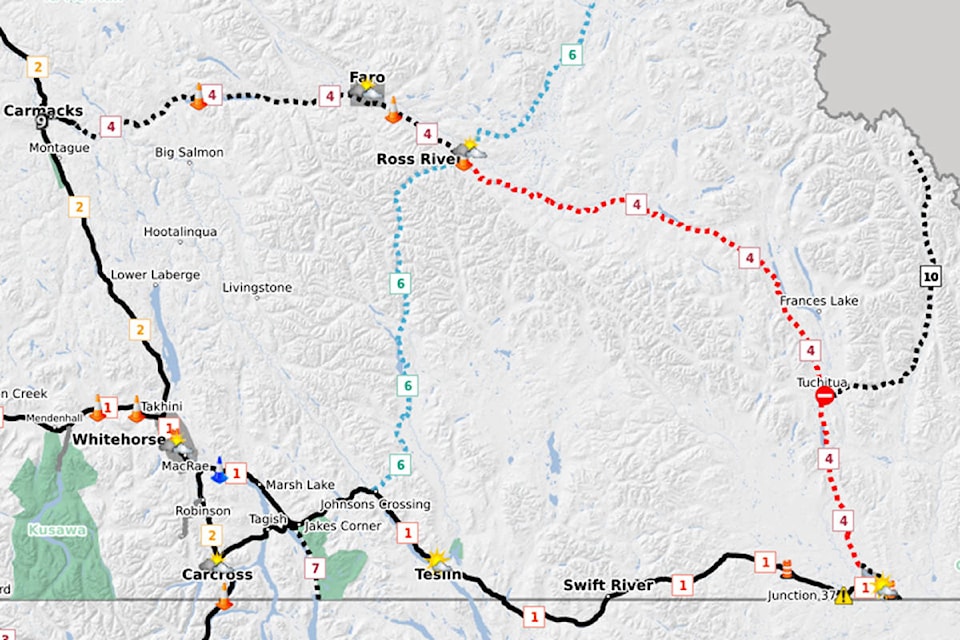Efforts to protect structures and roadways are keeping wildland fire crews busy at the sites of three growing fires.
The Tuchita River fire, currently burning at 2300 hectares, has forced the closure of a section of the Robert Campbell Highway north of Watson Lake. It is closed from kilometre 10 just outside Watson Lake to kilometre 360 south of Ross River. The fire was expected to reach the highway on July 8 near its junction with the Nahanni Range Road, but it was still about a kilometre away on July 9.
The fire, caused by lighting, was first reported on July 6. Since then it has grown quickly due to hot, dry conditions. Its growth is being monitored and crews are installing structure protection at nearby sites.
Fire Information Officer Julia Duchesne said structural protection efforts can take a few different forms. Sometimes, sprinklers are placed on the roofs of buildings to stop drifting embers from igniting.
In the case of the Lake Laberge fire, which is now 2774 hectares in size, a controlled burn to remove fuel was used.
Duchesne said the burn north of the blaze between it and structures at Hootalinqua was successfully completed on July 7.
“Wildland fire crews have protected cultural and historic sites at Hootalinqua, where the Thirty Mile [portion of the Yukon River] and the Teslin River meet,” a July 9 bulletin from Wildland Fire Management reads.
According to Wildland Fire, the blaze is expected to remain active, producing a lot of smoke. River users are being advised to avoid the area until conditions improve.
Structure protection efforts are also in the works near the Clear Creek Fire, which was 8800 hectares in size on July 8. It shrunk to about 8678 hectares on July 9 thanks to some rain.
As of July 7, there were a total of 25 active fires burning in the territory with a total of 35,118 hectares of forest up in smoke this season.
The fire risk remains high or extreme in parts of the southern Yukon. Scattered showers are in the forecast for the central and western parts of the territory but those weather systems may also bring isolated thunder and lightning with them.
Contact Jim Elliot at jim.elliot@yukon-news.com
